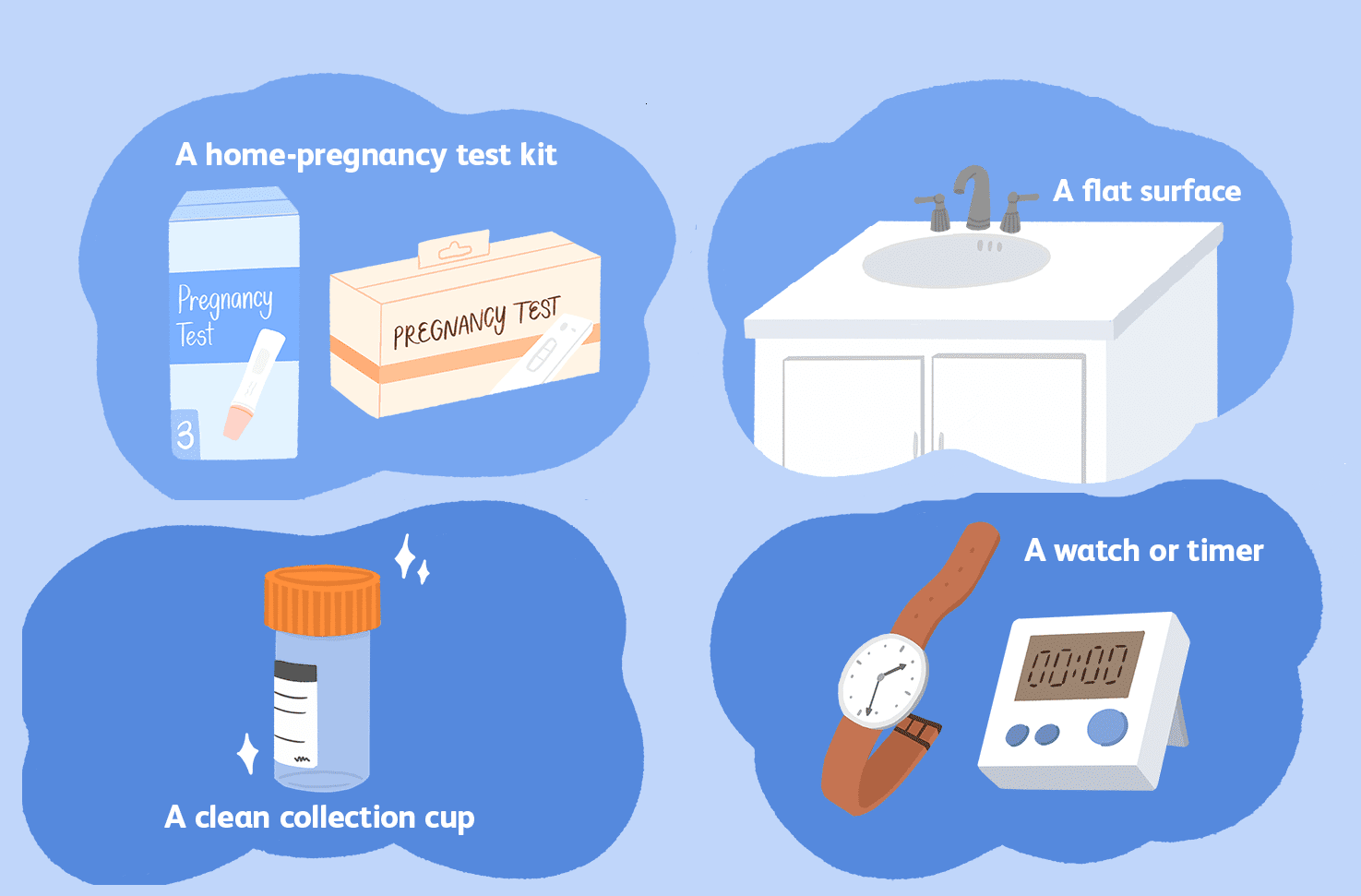Becoming a mother is something most women desire. Missing your period is one of the first signs of becoming pregnant, isn’t it? However, most women now also depend on at-home pregnancy test kits to check if they are pregnant. While your doctor can perfectly guide you through the process, most women go for a pregnancy test kit at home before booking their appointment. These kits are super easy to use and are one of the easiest ways to check if you have conceived or if it is just a false alarm. Now if you are new to this whole process and have all the how, when and what questions, then we have got you covered! Here is a full-fledged guide to answer all your queries and help you out.
Here’s Everything You Need To Know About Taking A Pregnancy Test At Home:
When Should You Take A Pregnancy Test?
-
Missed Your Period?
Your first cue to check whether you are pregnant or not is when you miss your period. Well, we know missing your period could be quite scary if pregnancy is not on your mind. Sometimes your period gets delayed due to various reasons like stress, travel, hormonal changes or even medicines. So, if you miss your period, it is an at-home check up to be certain if you are pregnant or not. The best time to take the pregnancy test is a week after your period date is due. Taking a test too early or just a day after your due date can often lead to false negatives.
-
If You Have Had Unprotected Sex
If you have had unprotected sex and/or missed your period, this is your cue to take the pregnancy test just to be sure. It is advised to take the pregnancy test after waiting for at least 7 to 12 days after having unprotected sex. This helps in getting more accurate results because by this time, the implantation has already happened. So, your body produces enough Human Chorionic Gonadotropin (HCG) hormone which can be easily detected in your urine which helps to indicate a pregnancy.
-
Are You Trying To Get Pregnant?
If you are trying to get pregnant, you can always follow the 7 to 12-days rule for testing. To get the most accurate result, take a pregnancy test after 21-days of having unprotected sex. In some cases, pregnancy tests can be used even before you miss a period.
-
Look For Symptoms
Ladies, you can always take an early test if you experience a few of these symptoms. Some early signs of pregnancy include soreness and tenderness of your breasts, especially around the nipples, constant fatigue, nausea, food aversions or frequent urination. Another sign is stomach cramps. Implantation can also produce a feeling like menstrual cramps. In early pregnancy, you may feel this discomfort and think your period is just around the corner, but then it never comes. These are a few symptoms to look out for, if you feel any of these then it’s time to take the test.

How Does An At-Home Pregnancy Kit Work?
Most of the OTC (over the counter) pregnancy tests usually are done by testing your urine for the Human Chorionic Gonadotropin – HCG hormone. This hormone is only present in your body if you are pregnant. The HCG hormone is released when a fertilized egg is attached outside the uterus or to your uterine lining. So, based on if or not the egg is attached to your uterus, the pregnancy test strip indicates whether you are pregnant. Most commonly, the pregnancy strip shows ‘+ or -’ and in some cases ‘| or ||’ lines.
If you get a positive (+ or ||) result, you are pregnant. This is true no matter how faint the line, color, or sign is. If you get a positive result, you may want to call your doctor to talk about what comes next and book an appointment to get it doctor-checked. In very rare cases, you can have a false-positive result.

Here are 7 weird things that happen to every couple during sex.
What Is The Right Way To Use A Pregnancy Test Strip?
Using a pregnancy kit at home is quite easy. But let’s go in depth and learn how to do it right! A pregnancy test strip is usually a plastic device that has three parts: a urine well, an opening that displays the test results and a plastic-shielded region. So, to get the most accurate results by using the strip the right way, you can follow these two easy-breezy steps –
1. Urine Collection
Don’t directly pee on the strip as it would surely be messy and might not land up exactly on the urine well. So, collect your urine in a sterile disposable cup or a bottle.
Note: It is best to collect a sample from the first morning pee.
2. Stick Usage
Most of the at-home pregnancy test kits come with a disposable plastic dropper. This dropper is meant to transfer a couple of drops (mostly 1 or 2 drops) of the urine from the cup to the urine well on the strip. Once this is done, all you gotta do is wait for five to ten minutes for the results. (The time of waiting is usually mentioned on the kit and differs from brand to brand.)

Note: This method is most common for the majority of the pregnancy test kits available in the market. However, it is still good to read the instructions on the kit carefully to check if the steps match before taking the test.
How To Analyze The Result?
So, after waiting for a few minutes, the pregnancy test will show you the result. There are four possible outcomes of this, here is everything you need to know –
1. Two Lines Or A ‘+’ Sign
If you see two lines or a ‘+’ sign, then congratulations, you are pregnant! You must then book an appointment with your doctor and confirm the same with a blood test.
2. One Line Or A ‘-’ Sign
A single red or pink line on the strip indicates you are not pregnant.
3. No Line
A blank strip with no lines can mean that HCG hormone is not adequately present in the urine to indicate a clear result. It can also indicate that the test was invalid and must be retaken again after a few hours or days. An invalid test can often occur for a variety of reasons. Some reasons include using the incorrect procedure, using an expired kit, spilling too little pee, or simply because the test was defective. In this scenario, retake the test using a different kit.
4. False Positive/Negative
Although pregnancy test kits are quite accurate, sometimes, they may indicate a false positive or negative result. In case you have a false-positive, it could be a result of the presence of blood or protein in your pee. Certain drugs, such as anticonvulsants, hypnotics, tranquilizers and fertility drugs, could cause false-positive results. It is always advisable to confirm it with a blood test suggested by your doctor.

Also, take note of these first night tips for grooms to reduce stress.
How To Make Sure Your Pregnancy Test Kit Result Is Accurate?
-
Clean Hands
While handling a pregnancy test kit, it is always best to ensure your hands are clean as dirty hands can interfere with the accuracy of the result. It can contaminate the strip and may lead to false positive or blank results. Also, make sure your hands do not come in contact with the urine that you are about to drop on the urine well of the strip as it may tamper the results.
-
Pee On The Mark Correctly
If you are not using a sterile bottle or cup to collect the pee, it is best to make sure you do so only on the pit-like area marked for it. If there is an accidental urine splashes on the other areas, it can lead to a blank result, and you may have to take the test again.
-
A Follow-Up Test
In case your test comes negative, always follow up on another pregnancy test. Make sure you repeat the test after 3 to 4 days to know the status. You can either try the same brand or switch to another one.
-
Picking The Right Time
As previously mentioned, the ideal time to take the test at-home is after 7 to 12-days of having unprotected sex. However, if you have irregular periods, then the best time is to take the test is three weeks after your sexual intercourse.
We hope that all this information comes in handy and is helpful!
Read these first night tips for brides to reduce stress and anxiety.
Also, recommend to your soon-to-be married friends some of the best wedding vendors approved by ShaadiWish!













Comments are closed.